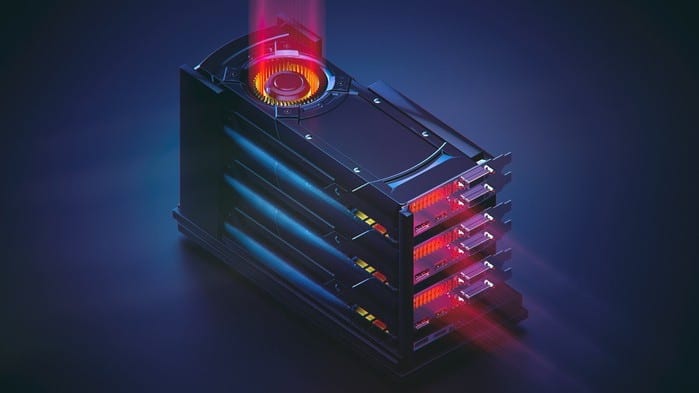This article was originally published on Fool.com. All figures quoted in US dollars unless otherwise stated.
NVIDIA's (NASDAQ: NVDA) gaming business has been on fire in recent quarters, and it looks like the segment's terrific growth is here to stay for the long run. At least that was the indication according to insights from the company's recent Investor Day presentation.
The graphics specialist is coming off an outstanding year, with revenue jumping 53% in fiscal 2021 to $16.7 billion and diluted earnings rising 73% year over year to $10 per share. And NVIDIA's guidance for the ongoing quarter indicates that things are about to get even better for the chipmaker. The company originally expected revenue to spike 72% year over year to $5.3 billion in Q1, but it recently said that actual revenue is tracking above that outlook.
NVIDIA investors may want to get used to such eye-popping jumps, as the company's main growth driver -- gaming -- is at the beginning of a multi-year growth curve. Let's see why.
NVIDIA's biggest business is on a red hot growth streak
The gaming business is NVIDIA's biggest source of revenue. It produced 50% of the company's total revenue last quarter, and it recorded 67% year-over-year growth, driven by huge demand for the RTX 30-series cards. It is also worth noting that NVIDIA closed the fiscal year with record gaming revenue of $7.76 billion, a 41% annual increase that outpaced the segment's five-year compound annual growth rate (CAGR) of 21%.
NVIDIA CFO Colette Kress remarked on the last earnings conference call: "Demand is incredible for our new GeForce RTX 30 Series products based on the NVIDIA Ampere GPU architecture." She also added that the RTX 30 series cards have been "hard to keep in stock and we exited Q4 with channel inventories even lower than when we started."
In fact, NVIDIA expects demand to exceed supply for "much of this year," even though the company says it will have enough stock to support sequential growth for future quarters. It is not surprising to see why such a scenario is unfolding.
NVIDIA estimates that 85% of its installed base of consumer graphics cards needs to be upgraded to the RTX series. That's because the company's RTX 30-series cards, based on the Ampere architecture, deliver a huge jump in performance over the older GTX-series cards and Turing-based RTX-series cards. The RTX 30 cards also offer ray-tracing capabilities -- a feature that's becoming an integral part of games nowadays.
NVIDIA says that a mid-range card like the RTX 3060 can deliver more than thrice the performance of a card like the GTX 1660 Super when ray-tracing is turned on. It is worth noting that the RTX 3060 has been launched at a suggested price of $329, compared to the $229 launch price of the GTX 1660 Super. As such, consumers are getting a 3X performance increase for a 40% bump in price.
The favorable price-to-performance ratio of the RTX 30 cards explains why these cards are in huge demand. For instance, NVIDIA launched the RTX 3080 at $699. The card is twice as fast as its predecessor -- the RTX 2080 -- which had a retail price of $799 at launch. The value proposition offered by the new cards is encouraging NVIDIA consumers, who are willing to pay more money for the bigger performance increase, to upgrade at a faster pace.
Faster upgrades, improved pricing power mean consistent gaming growth
NVIDIA says that its Ampere GPU (graphics processing unit) architecture is ramping up at twice the pace of its predecessors, the Turing and Pascal cards. This is also evident from the fact that the Ampere cards now enjoy two times the share of the preceding Turing cards on popular gaming platform Steam, which boasts 120 million monthly active users. That's impressive considering that the Ampere-based RTX 30 graphics cards were just unveiled in September 2020.
What's more, the attractive price-to-performance ratio of the Ampere cards is encouraging consumers to pay more money for a much-improved performance compared to the earlier generation cards. NVIDIA says that the Ampere cards are commanding an average selling price of $360 in the initial months after their launch. That's a 20% increase over Turing's average selling price of $300 for the first six months after launch, thanks in part to improved sales of higher-priced cards.
With a huge proportion of NVIDIA's installed base having yet to upgrade to the new cards, investors can expect the chipmaker to enjoy a combination of higher volumes and improved pricing for a long time to come. This should help the gaming business record consistently high growth levels, boost NVIDIA's overall revenue and earnings, and help it remain a top growth stock for a long time to come.
This article was originally published on Fool.com. All figures quoted in US dollars unless otherwise stated.









